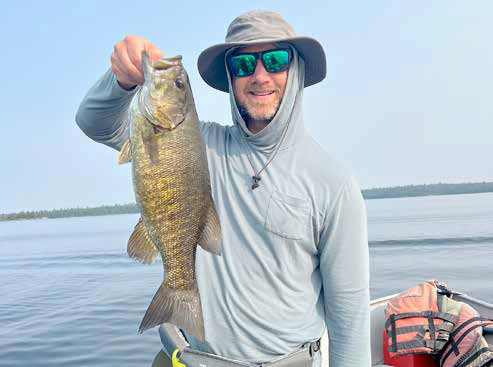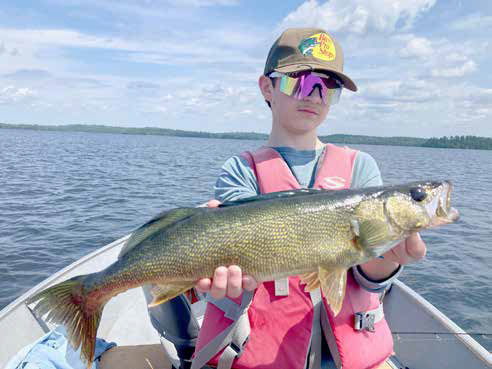Tower area
As is the case in the rest of the state, spring came early in the Tower work area. This typically corresponds with an early spawn, and warmer than average water temperatures for gamefish opener.
Walleye are more likely to be found moved off their spawning locations, but still in an active feeding patterns as they replenish their resources after the spawning season.
Excellent walleye year-classes produced in 2018 and 2021 should provide LakeVermilionanglersanopportunity to catch fish across awide range of sizes. The protected slot from 20 to 26 inches with a four-fish bag limit is still in place. Abundance remains excellent with plenty of keepers in the 14- to 19-inch range, especially in West Vermilion. Larger fish are more abundant than normal too, including many in or above the protected slot limit.
LakeVermilionmuskellungefishing continues to produce trophy fish for those willing to gear up for the challenge. Muskie fishing on inland waters begins Saturday, June 1.
Good walleye fishing can be found in many other lakes in the area, especially those that are challenging to get to. Smallmouth and largemouth bass fishing should continue to be good on several area lakes, with water temps conducive to spawning by the middle to end of May. Lake trout anglers may also find fish still cruising some of the shallow water, however as water temps do increase, lake trout will follow the cold-water refuge to deeper depths.
The Tower area hosts a number of designated stream trout lakes. Some have improved boat landings, some require portaging,somehaveawilderness component and some are suitable for shoreline angling. Trout species available in this area include rainbow, brook and brown trout, and splake. A trout stamp is required to fish on designated stream trout lakes or to possess trout. A few of the more accessible stream trout lakes in the area include Tofte, Miner’s Pit, St. James Pit, and Jammer Lake.
Regarding any type of fishing in the Boundary Waters Canoe Area Wilderness, all lakes require a valid travel permit that is administered by the U.S. Forest Service.
Safety must be the priority around cold water
Cold water is dangerous and unexpected falls can quickly turn tragic. About 30% of fatal boating accidents each year happen during the cold-water period, and many involve victims who weren’t wearing a life jacket. The most effective way to survive a fall into cold water is to wear a life jacket and make sure the jacket is buckled or zipped. For moreinformationaboutstayingsafeon and around cold water, visit the DNR cold water safety page.

Joe Anderson of Shawnee, KS with a 20 inch bass reeled in on Basswood Lake. Photo from 2023 North Country Angler.

Keaton Carey of Gladstone, MO with a 25 inch walleye he caught while fishing on Basswood Lake. Photo from Spirit of the Wilderness in 2023.
.jpg)











